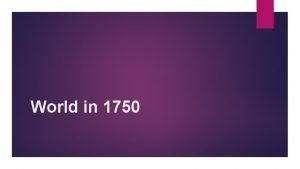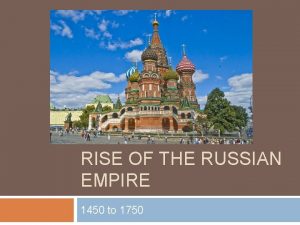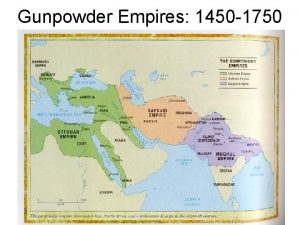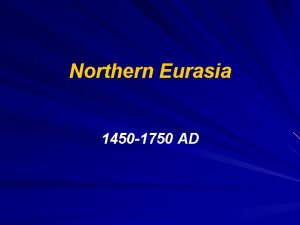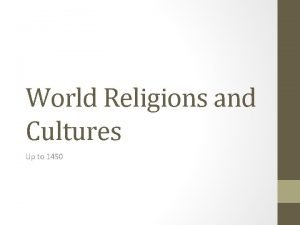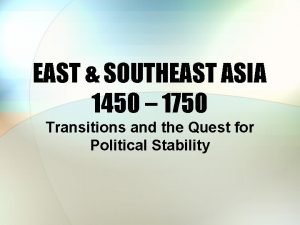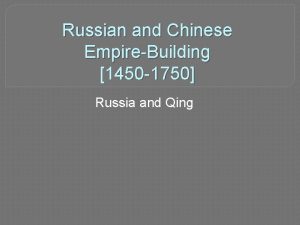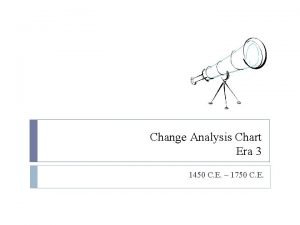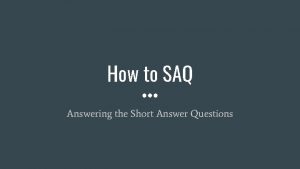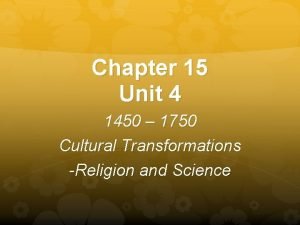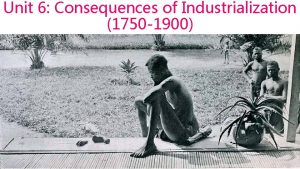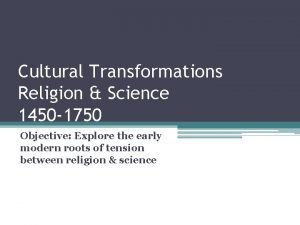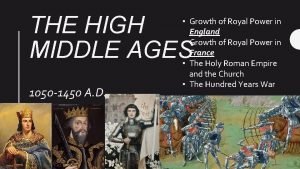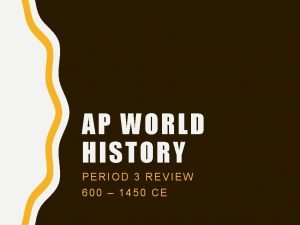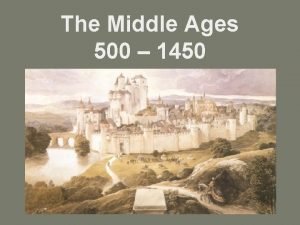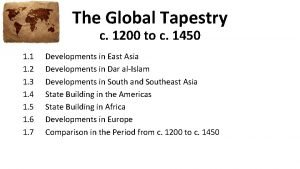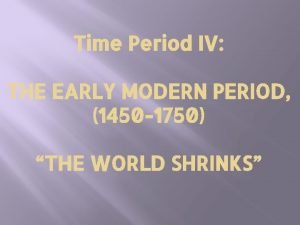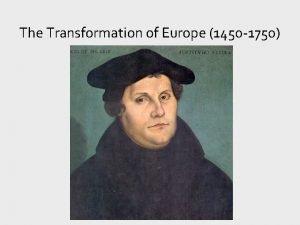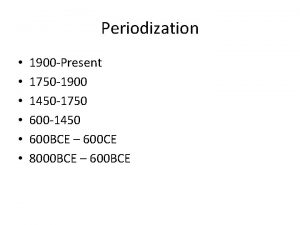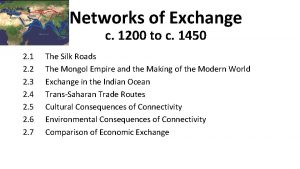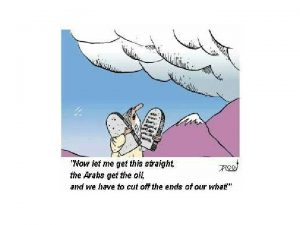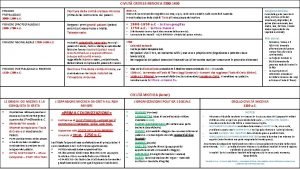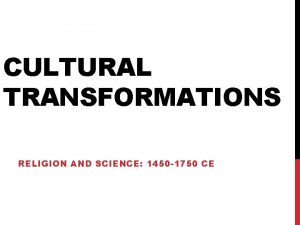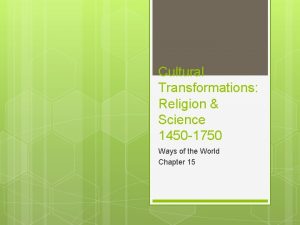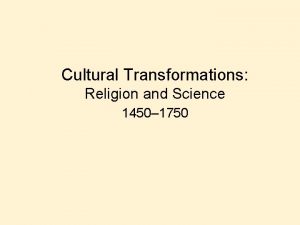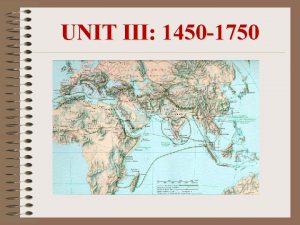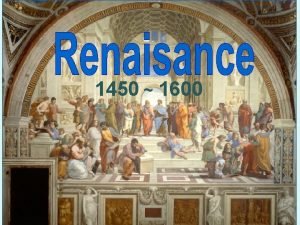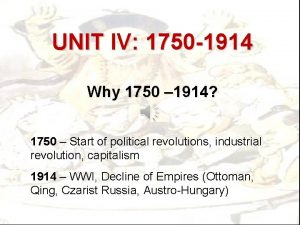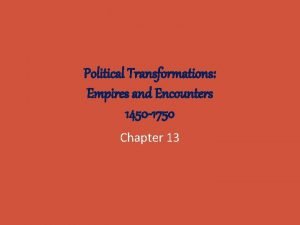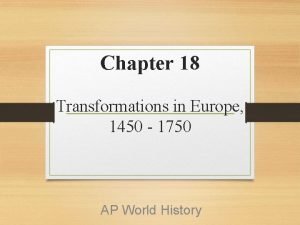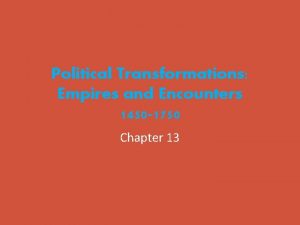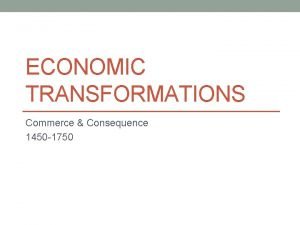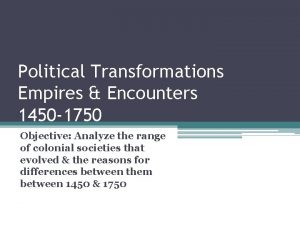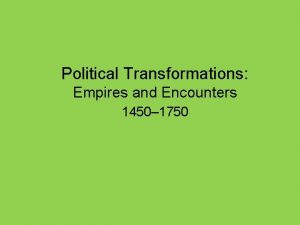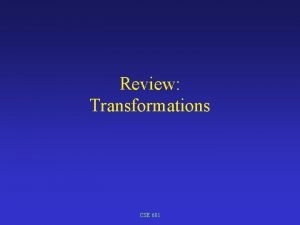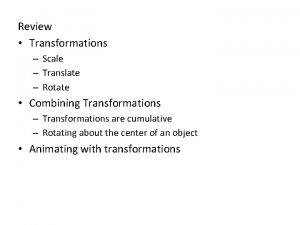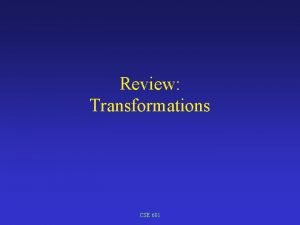Chapter 15 Unit 4 1450 1750 Cultural Transformations























- Slides: 23

Chapter 15 Unit 4 1450 – 1750 Cultural Transformations -Religion and Science

Protestant Reformation A religious movement in the 1500 s that split the Roman Catholic church and led to the establishment of a number of new churches October 31, 1517 Meme: “Nailed it”

Martin Luther 1483 -1546 German monk whose protests against the Catholic Church in 1517 (95 Theses) led to calls for reform and to the movement known as the Reformation “main mover and shaker”

Ninety-Five Theses List of grievances penned by Martin Luther and said to have been pubilcly posted on the doors of the Wittenberg Church in 1517

Indulgences Pardons issued by the pope of the Roman Catholic Church that could reduce a soul’s time in purgatory When sold in the 1400 s and 1500 s, it led to corruption, controversy, and the Reformation.

Salvation Eternal life Heaven

Schism Split or division between strongly opposed sections or parties, caused by differences in opinion or belief The formal separation of a church into two churches or the secession of a group owing to doctrinal or other differences

Catholic Counter Reformation An internal reform of the Catholic Church in the 16 th century; Thanks especially to the Council of Trent (15451563), Catholic leaders clarified doctrine, corrected abuses and corruption, and put a new emphasis on education and accountability.

Taki Onqoy (TAH kee OHN koy) Literally, “dancing sickness” A religious revival movement in central Peru in the 1560 s whose members preached the imminent destruction of Christianity and of the Europeans in favor of a renewed Andean Age

Ursula de Jesus Slave and later religious lay woman at the Peruvian Convent of Santa Clara A lucky escape inspired her to pursue a pious life of mortification and good words gaining a reputation as a woman of extraordinary devotion and humility as well as a visionary and mystic

Jesuits aka “Society of Jesus” Catholic missionary order Founded by Ignatius of Loyola Part of the Catholic Counter Reformation


Wahhabi(wah-HAB-ee)Islam Major Islamic movement led by the Muslim theologian Abd al. Wahhab (17031792) Advocated an austere lifestyle and strict adherence to Islamic law

kaozheng (kow-jung) Literally, “research based on evidence” Chinese intellectual movement whose practitioners emphasized the importance of evidence and analysis Applied especially to historical documents

Mirabai (MIR-ah-bye) One of India’s most beloved bhakti poets (1498 -1547) Helped break down the barriers of caste and tradition

Sikhism (SEEK-ism) Religious tradition of northern India Founded by Guru Nanak ca. 1500 Combines elements of Hinduism and Islam Proclaims the brotherhood of ALL humans AND the equality of men and women

Nicolaus Copernicus Polish mathematician and astronomer 1473 -1543 Was the first to argue for the existence of a heliocentric cosmos

Isaac Newton English scientist 1643 -1727 Formulated laws of motion and mechanics Findings are considered the culmination of the Scientific Revolution

t n e m n e t h g i l n E n a e p o r Eu European intellectual movement of the eighteenth century (1700 s) Applied the lessons of the Scientific Revolution to human affairs Was noted for its commitment to openmindedness and inquiry and the belief that knowledge could transform human society


Philosophes Lovers of wisdom French term for Enlightenment thinkers - philosophers

Voltaire Pen name of the French philosopher Francois – Marie Arouret (1694 -1778), whose work is often taken as a model of Enlightenment questioning of traditional values and attitudes; notes for his deism and his criticism of traditional religion

Condorcet (kahn-dor-SAY) & the idea of progress The Marquis de Condorcet (1743 - 1794) was a French philosopher and political scientist who argued that human affairs were moving into an era of near-infinite improvability, with slavery, racism, tyranny, and other human trials swept away by the triumph of reason.
 Mughal empire 1450 to 1750
Mughal empire 1450 to 1750 Silver trade 1450 to 1750
Silver trade 1450 to 1750 Russian empire 1450 to 1750
Russian empire 1450 to 1750 Land based empires 1450 to 1750
Land based empires 1450 to 1750 Japan 1450-1750
Japan 1450-1750 Religion in 1450 to 1750
Religion in 1450 to 1750 Southeast asia 1450 to 1750
Southeast asia 1450 to 1750 Russia 1450 to 1750
Russia 1450 to 1750 Change analysis chart 1450 to 1750
Change analysis chart 1450 to 1750 Saq answer example
Saq answer example Ursula de jesus ap world history
Ursula de jesus ap world history Def of industrialization
Def of industrialization Cultural transformations religion and science
Cultural transformations religion and science 1450 ad
1450 ad Best buy st. george utah
Best buy st. george utah Ap world history period 3
Ap world history period 3 500/1450
500/1450 The global tapestry
The global tapestry World map 1450
World map 1450 Europe 1450
Europe 1450 1750+600
1750+600 Adopalen
Adopalen 1250 bc
1250 bc 2300-1450
2300-1450
